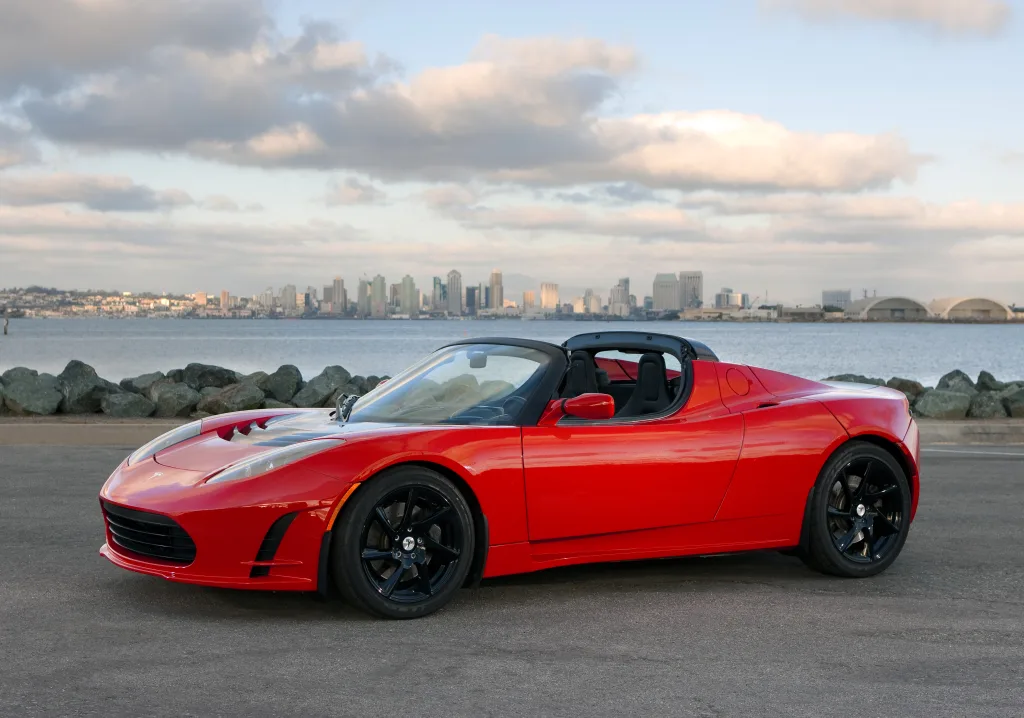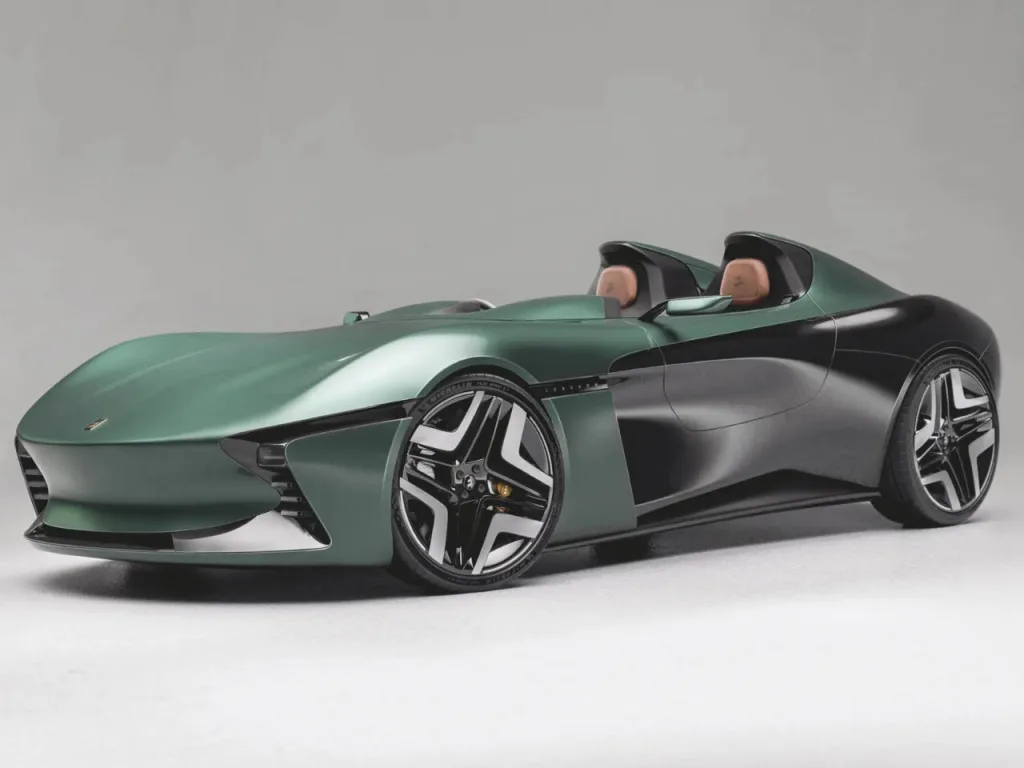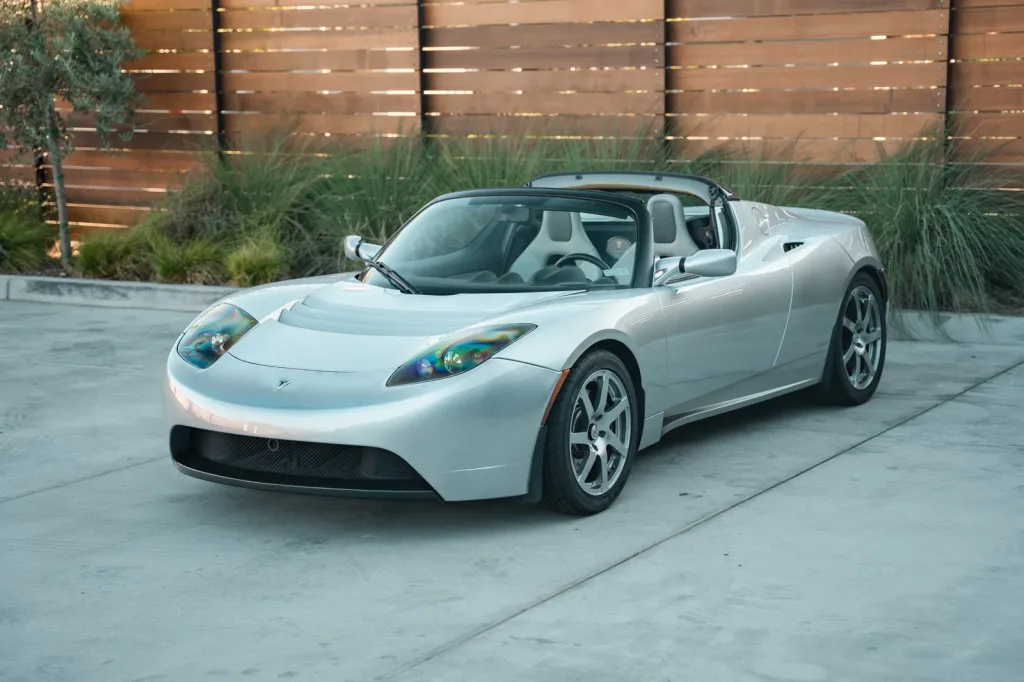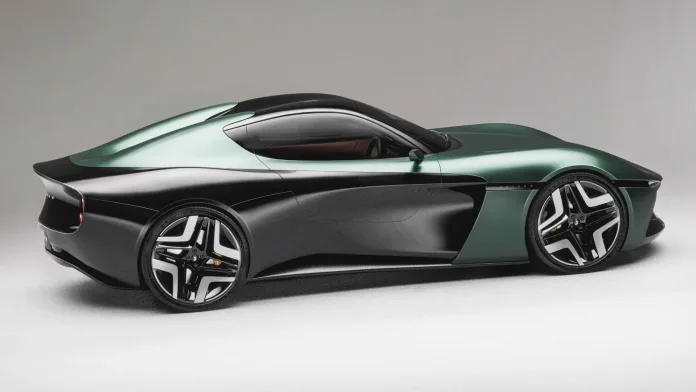In a bold move that’s sending ripples through the automotive world, a trio of former Tesla engineers have unveiled their own electric Roadster that aims to beat Elon Musk’s long-delayed Tesla Roadster to market. The aptly named Longbow—a UK-based startup founded in 2023—has revealed not one but two Longbow Featherweight electric sports cars set to begin production in early 2026, challenging Tesla’s much-hyped but perpetually postponed Roadster with a lighter, more focused approach to electric performance.
“A lot of customers have put deposits down for a Tesla Roadster they can’t get,” Longbow Featherweight co-founder Daniel Davy told Top Gear in a not-so-subtle jab at his former employer. “So we thought we’d be the first electric Roadster to actually follow the Tesla Roadster. If people want to get their $250,000 deposit back for a 2020 car and put it into something better, they’ll get one sooner with us.”
The Team Behind the Challenge
Longbow wasn’t founded by just any automotive enthusiasts—this is a team with serious electric vehicle credentials:
| Founder | Background | Expertise |
|---|---|---|
| Daniel Davy | Former Tesla Engineer | EV powertrain development |
| Mark Tapscott | Former Tesla Engineer | Lightweight structures and battery integration |
| Third co-founder | Former CEO of an electric boat company | Marine electrification and powertrain systems |
Their collective resume includes stints at some of the most innovative companies in the performance and electrification space, including Lucid Motors, BYD, Formula E, Lotus, Aston Martin, and Ariel—an all-star lineup of talent that combines cutting-edge EV technology with deep roots in lightweight sports car design.

Featherweight Champions: The Longbow Lineup
Longbow is introducing two models that exemplify their philosophy of “Celeritas Levitatis” (the Speed of Lightness)—a deliberate counterpoint to the industry trend toward increasingly heavy electric vehicles:
The Speedster: Open-Air Electric Thrills
The first model to reach production will be the Speedster—an uncompromising, roofless thrill machine designed for the purest driving experience:
- Weight: Just 1,973 pounds (895 kg)—lighter than a Mazda MX-5 Miata
- Acceleration: 0-60 mph in 3.5 seconds
- Range: 275 miles (WLTP)
- Price: Starting at $110,000 (£84,995)
- Production: Limited to 150 units
With no roof, no windows, and no windshield, the Speedster represents the most minimalist approach to electric performance—a stark contrast to Tesla’s technology-laden vision.
The Roadster: Fixed-Roof Performance
Following the Speedster will be the Roadster—despite its name, actually a fixed-roof coupe designed for all-weather usability:
- Weight: 2,193 pounds (995 kg)
- Acceleration: 0-60 mph in 3.6 seconds
- Range: 280 miles (WLTP)
- Price: Starting at $84,000 (£64,995)
- Production: Larger volume than the Speedster
The name “Roadster” is a deliberate provocation—a direct challenge to Tesla’s repeatedly delayed vehicle that was first unveiled in 2017 with promised deliveries by 2020.

A Tale of Two Roadsters: Longbow vs. Tesla
The contrast between Longbow’s approach and Tesla’s vision couldn’t be more stark:
| Feature | Longbow Roadster | Tesla Roadster (Promised) |
|---|---|---|
| Weight | 995 kg | Unknown (likely 1,800+ kg) |
| Acceleration (0-60) | 3.6 seconds | 1.9 seconds (claimed) |
| Range | 280 miles | 620 miles (claimed) |
| Top Speed | Unknown | 250+ mph (claimed) |
| Price | $84,000 | $200,000+ |
| Current Status | Production beginning early 2026 | Repeatedly delayed since 2020 |
| Design Philosophy | “Lightweight above all else” | “Ultimate performance with no compromise” |
While Tesla promises more extreme performance figures, Longbow is betting that true driving enthusiasts will appreciate their back-to-basics approach that emphasizes agility and driver engagement rather than headline-grabbing acceleration numbers.
The Lightweight Revolution
What makes Longbow’s approach particularly interesting is their focus on solving one of the biggest challenges in electric vehicle design: weight. Most EVs are substantially heavier than their internal combustion counterparts due to their battery packs, a reality that compromises handling and driving dynamics.
Longbow claims to have engineered a solution through:
- Bespoke aluminum chassis optimized for minimal weight and maximum stiffness
- Lighter, more compact motors than industry standards
- Innovative battery technology that reduces weight without compromising range
- Minimalist design philosophy that eliminates unnecessary features
The result is truly remarkable—the Roadster weighs approximately the same as a Hyundai i10 city car, while the Speedster is even lighter. This achievement could represent a significant breakthrough in EV sports car design.
Market Positioning and Competition
At their price points, the Longbow models will face competition from both established internal combustion sports cars and emerging electric alternatives:
- Porsche 718 Cayman S (Internal combustion, starting around £64,000)
- Alpine A110 (Internal combustion, starting around £60,000)
- MG Cyberster (Electric roadster, starting at £59,995)
- Tesla Roadster (Electric, expected around £200,000—if it ever arrives)
The company is positioning its vehicles as spiritual successors to the lightweight British sports cars of old, evoking the philosophy of Lotus founder Colin Chapman: “Simplify, then add lightness.” It’s a stark contrast to Lotus’s current direction under Chinese ownership, which has produced electric vehicles weighing 2.5 tons or more.

Limited Editions and Exclusivity
Understanding the appeal of exclusivity, Longbow is offering special variants of their vehicles:
- Luminary 1st Edition: Limited to just 10 examples
- Autograph Edition: Limited to 25 units
- Standard Speedster: Limited to 150 total vehicles
For early adopters looking to secure one of these limited-run vehicles, Longbow is already accepting reservations.
The Challenges Ahead
While Longbow’s vision is compelling, the path for automotive startups—especially those in the EV space—is notoriously difficult. The landscape is littered with promising companies that unveiled exciting concepts but never delivered production vehicles, including Arrival, Canoo, and most recently, Fisker.
To succeed where others have failed, Longbow will need to:
- Secure sufficient funding to bring their vehicles to production
- Navigate regulatory requirements across multiple markets
- Establish manufacturing capabilities at scale
- Build a service and support network for customers
- Deliver on their technical promises regarding weight, performance, and range
Also Read: Why the Maruti Suzuki e-Vitara Is a Big Deal?

FAQs About Longbow’s Roadster EV
Who founded Longbow and what is their background?
Longbow was founded in 2023 by Daniel Davy and Mark Tapscott, both former Tesla engineers, along with a third co-founder who previously led an electric boat company. Their combined experience includes work at Lucid Motors, BYD, Formula E, Lotus, Aston Martin, and Ariel.
How does the Longbow Roadster compare to Tesla’s promised Roadster?
While Tesla’s Roadster promises more extreme performance (0-60 in 1.9 seconds, 620-mile range), Longbow’s approach focuses on lightweight design (995 kg total weight) and driver engagement. Longbow’s Roadster is also significantly less expensive at $84,000 compared to Tesla’s expected $200,000+ price tag.
What makes Longbow’s “featherweight” approach unique in the EV market?
Most electric vehicles are substantially heavier than their gasoline counterparts due to battery weight. Longbow claims to have solved this problem through innovative engineering, creating sports cars that weigh less than 1,000 kg—comparable to small gasoline city cars rather than typical EVs.
When will Longbow start producing these vehicles?
Longbow plans to begin production of the Speedster in early 2026, followed by the Roadster. Reservations are already open for both models.
How limited will production be?
The Speedster will be limited to 150 total units, with even more exclusive Luminary 1st Edition (10 units) and Autograph Edition (25 units) variants available. Production numbers for the Roadster haven’t been confirmed but are expected to be higher.
Conclusion: David vs. Goliath in the EV Sports Car Arena
Longbow’s challenge to Tesla represents one of the most intriguing automotive storylines of 2025. While Tesla has the resources, brand recognition, and technological might of a trillion-dollar company, Longbow brings nimbleness, focus, and a pure sports car ethos that may resonate deeply with enthusiasts.
The very name “Longbow” evokes the medieval English weapon that allowed skilled archers to defeat numerically superior forces—an apt metaphor for a startup taking aim at one of the world’s most valuable companies.
Whether Longbow can succeed where so many other EV startups have failed remains to be seen. But one thing is certain: by throwing down the gauntlet to Tesla and targeting a 2026 production date, they’ve set a clear timeline for delivering on their ambitious promises—something that Elon Musk and Tesla have repeatedly struggled to do with their own Roadster.
For sports car enthusiasts who value lightweight agility over brutal straight-line acceleration, Longbow’s vision represents an exciting alternative to the increasingly heavy electric vehicles that dominate today’s market. If they can deliver on their promises, they may well establish themselves as the conscience of the electric sports car world—a reminder that sometimes less really is more.


